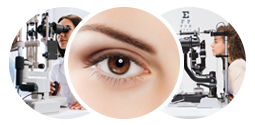

Presbyopia is an age-related condition in which the eye gradually loses its ability to focus on close objects. It typically becomes noticeable in people over the age of 40 and is a natural part of the aging process. Unlike other refractive errors such as myopia (nearsightedness) or hyperopia (farsightedness), presbyopia is caused by a gradual stiffening of the eye's lens, reducing its flexibility to adjust focus.
Presbyopia occurs due to the hardening of the crystalline lens inside the eye. In younger individuals, this lens is flexible and can easily change shape to focus on near and far objects. However, with age, the proteins within the lens become rigid, and the ciliary muscles responsible for adjusting focus weaken. This makes it difficult to see objects up close, leading to symptoms of presbyopia.
The most common symptoms of presbyopia include:
An eye doctor (optometrist or ophthalmologist) can diagnose presbyopia through a comprehensive eye exam, which includes:
Although presbyopia cannot be cured, several treatment options can help correct vision:
Although presbyopia is inevitable, some practices can help maintain good eye health:
Presbyopia is a common and natural condition that affects nearly everyone as they age. While it cannot be prevented, various corrective measures such as eyeglasses, contact lenses, and surgical treatments can help manage its effects effectively. Regular eye check-ups and good visual habits can contribute to maintaining clear vision and overall eye health. If you experience symptoms of presbyopia, consulting an eye care professional is the best step toward finding an appropriate solution.

We offer advanced treatments, expert consultations, and state-of-the-art technology to ensure your vision stays sharp and healthy. Book an appointment today and take the first step toward better eye health.